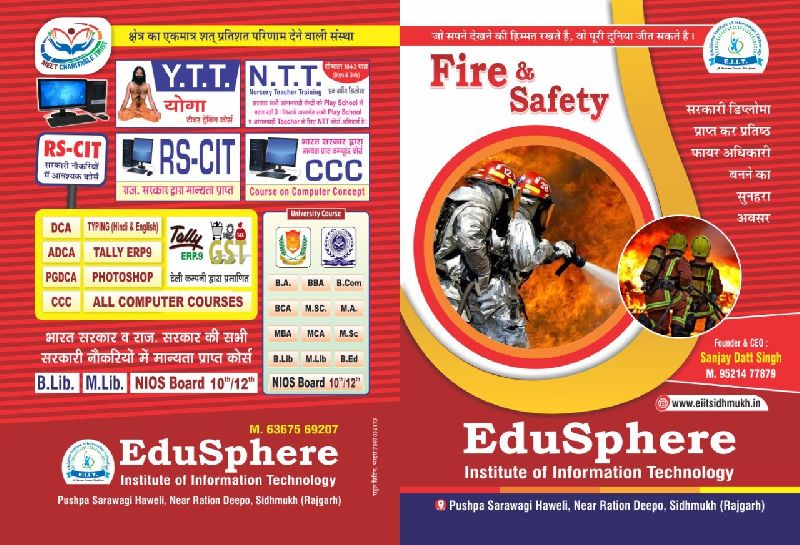
A typical fire safety syllabus covers a range of topics including fire behavior, prevention, detection, suppression, and control. It also includes emergency response, safety regulations, and the importance of safety management. Key areas often include understanding fire dynamics, identifying hazards, implementing fire safety measures, and ensuring compliance with fire codes and regulations.
Here's a more detailed breakdown of common topics:
Fundamentals of Fire Science:
· Combustion and Fire Behavior:
Understanding the chemistry of fire, including the fire triangle (fuel, oxygen, heat), and how different types of fires behave.
· Fire Hazards:
Identifying potential fire hazards in various environments, such as industrial settings, buildings, and homes.
· Fire Prevention:
Learning about fire prevention measures, including proper storage of flammable materials, electrical safety, and smoke alarms.
Fire Safety Measures and Systems:
· Fire Detection and Alarm Systems:
Understanding different types of fire detection systems and how they work, including smoke detectors, heat detectors, and sprinkler systems.
· Fire Suppression Systems:
Learning about different fire suppression methods, such as water, foam, and dry chemical extinguishers, and how to use them effectively.
· Fire-Resistant Construction:
Understanding the principles of fire-resistant construction and how it helps to limit the spread of fire.
· Means of Escape:
Learning about the importance of safe and accessible escape routes, including fire doors, stairs, and emergency exits.
Emergency Response and Safety Management:
· Emergency Plans:
Understanding the importance of developing and implementing emergency plans, including evacuation procedures, fire drills, and communication protocols.
· First Aid and CPR:
Learning basic first aid and CPR techniques to handle injuries and illnesses during emergencies.
· Safety Management:
Understanding the principles of safety management, including hazard identification, risk assessment, and safety training.
· Fire Safety Legislation and Regulations:
Learning about fire safety laws and regulations, including the Factory Act 1948 and other relevant codes.
Other Important Topics:
· Firefighting Equipment:
Understanding the use and maintenance of firefighting equipment, such as hose reels, fire hydrants, and breathing apparatus.
· Fire Extinguishers:
Learning about the different types of fire extinguishers, their applications, and how to use them correctly.
· Human Behavior in Fire Situations:
Understanding how people react during a fire and how to guide them to safety.
· Fire Risk Assessment:
Learning how to conduct fire risk assessments to identify and mitigate fire hazards.
To qualify for a fire and safety course in India, you generally need to have completed Class 10 or 12, depending on the specific course level. For diploma courses, a minimum of Class 10 is often required. For undergraduate courses like B.Sc. or B.Tech, you'll typically need to have completed Class 12 with a science stream (Physics, Chemistry, and Mathematics). Postgraduate courses like M.Tech/ME usually require a bachelor's degree in Fire & Safety